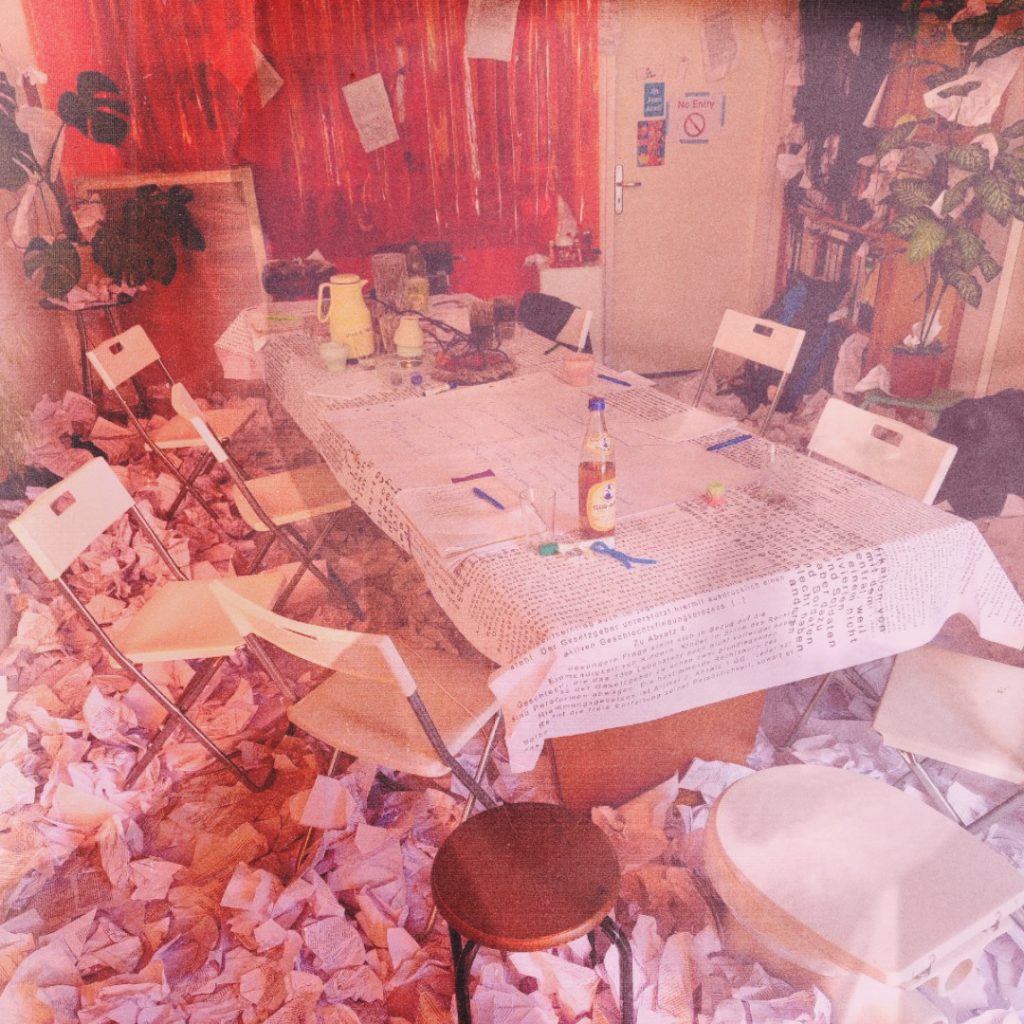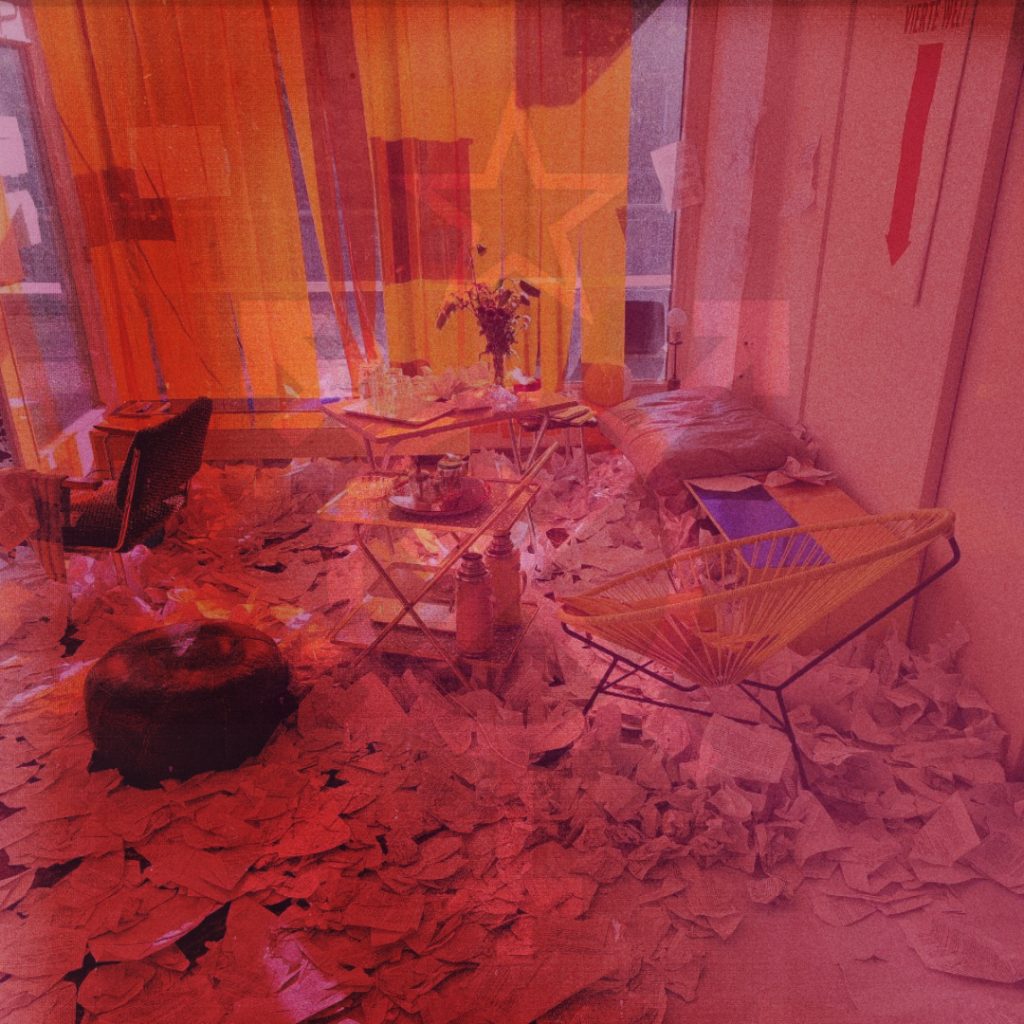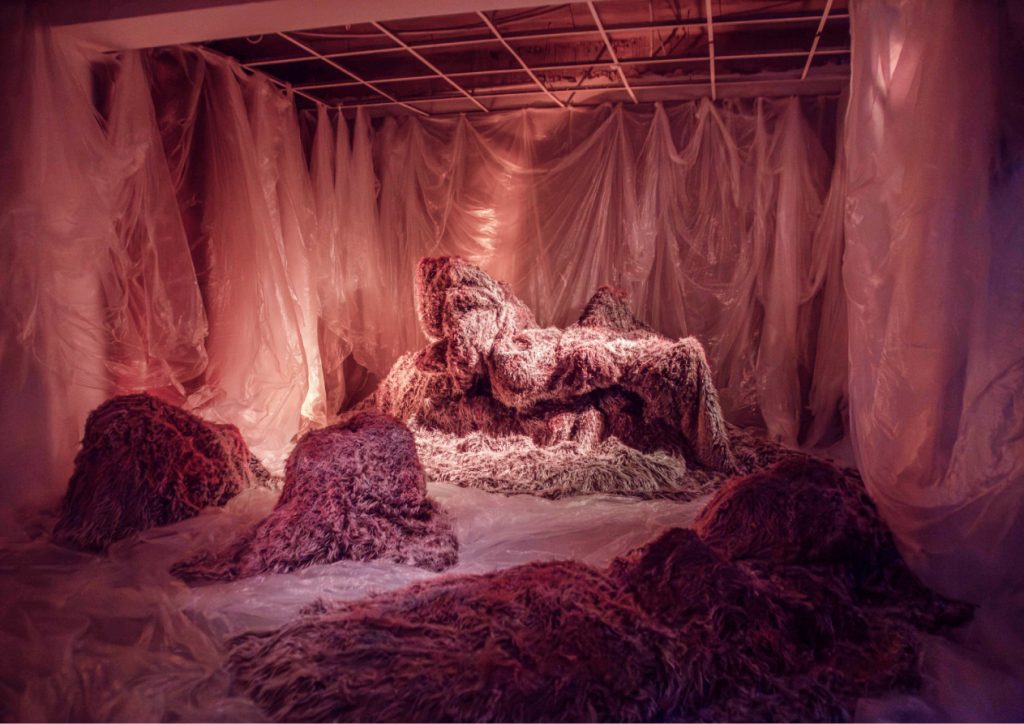On April 12, 2024, the so-called Self-Determination Act (Selbstbestimmungsgesetz, SBGG) was passed in the German Bundestag to replace the unconstitutional “Law On Transsexuals” (Transsexuellengesetz, TSG). German TIN* (Trans, Intersex, Non-Binary) policy thus entered the post-TSG era. The law has been in force since 1.11.2024. Back in January 2024, when it was not yet clear whether the law would pass at all, we decided to organize a large-scale queer and TIN* political strategy conference to network and plan next steps if necessary.Queerokratia was a political-aesthetic conference that took place in Berlin from May 30 to June 2, 2024. It was funded by the Hauptstadtkuturfonds. The conference aimed to bring together activists, politicians and artists to discuss what progressive queer politics can look like today. Over 100 activists and NGO workers were invited, as well as artists and a few private individuals. It was a conference of multipliers under a common question: What is TIN* politics in the post-TSG era?
We did not only want to work on content. We also wanted to offer a space beyond standardizing aesthetics of representation. For the way we do politics is directly inscribed in the form or shape of our politics. When we sit across from each other at large tables, we talk to each other differently than when we are holding hands at a park or in a club. Queer politics must not only be politics by and for queers – it must also formally transform political coexistence. It needs:



A New Aesthetic of Negotiation
One aspect of this was, for example, to generate the content and structure of the conference. First, we collected suggestions for topics, including “self-protection in the eye of fascism”, “supporting legal processes”, “digitalization”, “parentage law” (Abstammungsgesetz), etc. We tried to cluster these topics and place them in 36 slots, each with a brief description of the problem and an objective. There was to be neither input nor moderation. All participants were self-motivated experts and therefore would need little or no guidance. The concept worked: Instead of addressing each other as authorities with ready made positions, at the conference, we experienced genuine exchanges and creative interactions.
However, the new aesthetics of negotiation was not to stop here. The conference set out to bring political and creative intimacy as closely together as possible. Queerokratia therefore presented itself as a place that unites aesthetics and activism. The conference was a cuddly declaration of war that focused on tenderness and cohesion rather than confrontation.
Conceptually, we therefore used the conference to explore the hospitality of spatial concepts and stage designs. Why hospitality? The world we live in is largely structured by private property and contracts. People meet each other with ideas about what is to be done (contract). People supposedly exchange their “opinions” in the same way that they exchange used clothes or consumer goods. Hospitality counters both: Like private property, hospitality is about ownership – but not in an exclusionary way, but in the sense of sharing. And like contractuality, hospitality is also about social organization and rules – again, however, not in a determining and excluding way, but in the sense of collective negotiation. Hospitality therefore provides resources for the central questions of our time: economy and social organization, ownership and togetherness.
Hospitable Spaces
We wanted to find out to what extent the design of spaces change the interaction of the guests in them. To this end, Fadi Aljabour designed three rooms: “Pre-Construction”, “Bedroom” and “Conference House”.
The “Pre-Construction” room was shrouded in darkness and contained an interactive installation with 20 large fur sculptures of different sizes, which were individually designed by coloring and changing the texture of the fur. They were interwoven with materials such as transparent nylon, as used to protect walls during painting. The mixture of tactile and raw elements created a dramatic, theatrical atmosphere that aimed to create a sense of spiky hospitality. The space was dedicated to intimate conversations on topics such as self-defense, East-West relations and fundraising.
The ‘bedroom’ was furnished with three double beds surrounding a large dressing table. The room had a personal, intimate feel and was filled with personal items such as makeup and clothing of the dialog leaders. This setting encouraged discussions about general political strategies that remained both open and private thanks to the close proximity between participants.
The “Conference Haus” was filled with 7,800 pages of printouts of the German government’s self-determination law, creating a sense of chaos and disorder. The room also contained a large table with the alternative law written by “Selbstbestimmung Selbst Gemacht” (SBSG) adorning the tablecloth. Otherwise, the room was left in its original state, with all the details from before the conference. It also served as the company kitchen. This artistic installation, together with an audio documentation of the Self-Determination Act, was also on display at the Queer Museum in Vienna, Austria, in the fall of 2024.

Aljabour’s installations significantly transformed politics as we know it. The internal structure of the conference was determined throughout by its materiality. In a reversal of the Bauhaus credo, the motto became: “Function Follows Form!”
Thus, the layout of the rooms determined the number of conversations that could take place: It was possible to speak at nine locations simultaneously, both mornings and afternoons. This resulted in a total of 36 bowls on the two main conference days.
Furthermore, the traditional seating arrangement – a table, where positions are exchanged – became largely impossible. The conference was organized in a “bowling” system instead (where each conversation is “a bowl”). Here, discussions took place in designated areas (such as beds or large fur islands), while participants who were not currently taking part were arranged around them. In this way, the spatial design became constitutive of the conference organization in a non-hierarchical, collaborative way. Rather than reinforcing the authority of the speakers, the space invited people to engage in the discussion or withdraw as they wished. This unique spatial design facilitated fluid and friendly debates, transforming spectators into active participants in both the conference and the installation.
Hospitable Atmosphere
It’s not what you say but how you say it – yet someone has to say it. Room create moods. But they also have to be operated. To navigate the installations in the appropriate, hospitable direction, we chose two paths: a suggestion for hospitable habits and a few hosts who would take first steps towards hospitality.
These suggestions were to be understood as primers, as possibilities that could be implemented without pressure. Like serving suggestion on advertisement for food, which at times cannot be implemented – if, for example, the packaging of breakfast cereals advertises squirrels. Our suggestions dealt with hospitable behaviors towards one another. They emerged from a workshop on hospitable behaviors and TIN* policy that lasted several days. This resulted in a short handout that was briefly presented and distributed at the beginning of the conference. It looked like this:
[image of host sheet – coming soon]
In addition, some people had already come together in April and May to prepare for the conference in terms of both content and form. These people acted as hosts at the conference, some officially, some unofficially. Our idea was that these hosts could make sure that everyone was nice to each other during the debates, that the timid felt encouraged, the loud ones held back a little, that there were minutes of each round, that there were smiles, that simple questions could be asked without fear of rejection, etc. In addition, the hosts could normalize the special equipment and encourage people to use the bowls instead of falling back into a simple plenary round.
However, we did not want to enforce these activities by decree or with authority. Rather, the hosts should set an example to ensure an atmosphere that is as free of authority as possible – an atmosphere that would invite rather than determine to act.
Ballroom
Arrival and departure are central aspects of a hospitable community. Accordingly, we dedicated an entire day to each, which took place at Ballhaus Ost in Berlin Prenzlauer Berg. After a brief welcome, the kick-off event began by naming some things we might want to talk about, but which either couldn’t take up so much space or which we were afraid to talk about. We called this “the elephant in the room”. For example, there had been a small burn-out epidemic in the trans-political scene due to the increased workload following the passing of the Self-Determination Act, for example. That’s why we spoke in chorus: “The depression is here with us. But it will not get us down!” Participants were then invited by lot to name something unspeakable – or alternatively to make an animal noise. This practice actively involved the participants right from the start of the event.
This first round was followed by a first bowl, introduced by some programmatic statements from trans activism, medical, legal and anarchist activists. Afterwards, anyone who wanted to could take a seat in front of the assembled 100 or so guests to speak about the current state of TIN* politics in Germany and the world. The result was a comprehensive snapshot, ranging from government proximity to revolutionary rhetoric.
In the third part of the opening event, we tried to get to know each other better through three polemical questions. The opening event loosened up participants and introduced them to each other. It laid the foundation for the following days.
On the last day, we returned to the Ballhaus. There was a long table set on the stage for about 15 people, each with a white plate and a carrot. What would it look like, the optimal outcome of a strategy conference on TIN* policy? It would be nice if our political representatives could listen to us. That’s why then chancellor of Germany Olaf Scholz sat on stage wearing a mask. He gave a short speech in which, among other things, he declared euphoria to be a Staatsräson. The entire Ballhaus statement can be found here [link]. This speech was followed by a report on Queerokratia by the head of the Chancellor’s Office. Everyone present was then invited to sit down at the table, eat a carrot and present their concerns and suggestions to our Chancellor. Olaf said yes to everything. Although hesitant at first, more and more participants soon joined Olaf at the table to tell him, sometimes friendly, sometimes angrily, what they thought of him and of current TIN* policies. After about 45 minutes, the audience staged a riot: nobody wanted to talk to the elected representatives any more. Olaf was asked to leave the stage – and did so immediately. The participants then rearranged the stage. Suddenly, most attendees had moved on stage and everyone talked about what was next for them politically, followed by a short feedback round regarding the conference. From our perspective, this takeover was a big success. For Queerocracy is collective self-determination, as opposed to the individual self-determination proposed by the federal government in its law. And a collective uprising that asks the chancellor to leave the stage and take a seat himself is definitely a step in the right direction.
Genders to each, according to their needs!
Queerocracy for all!








































